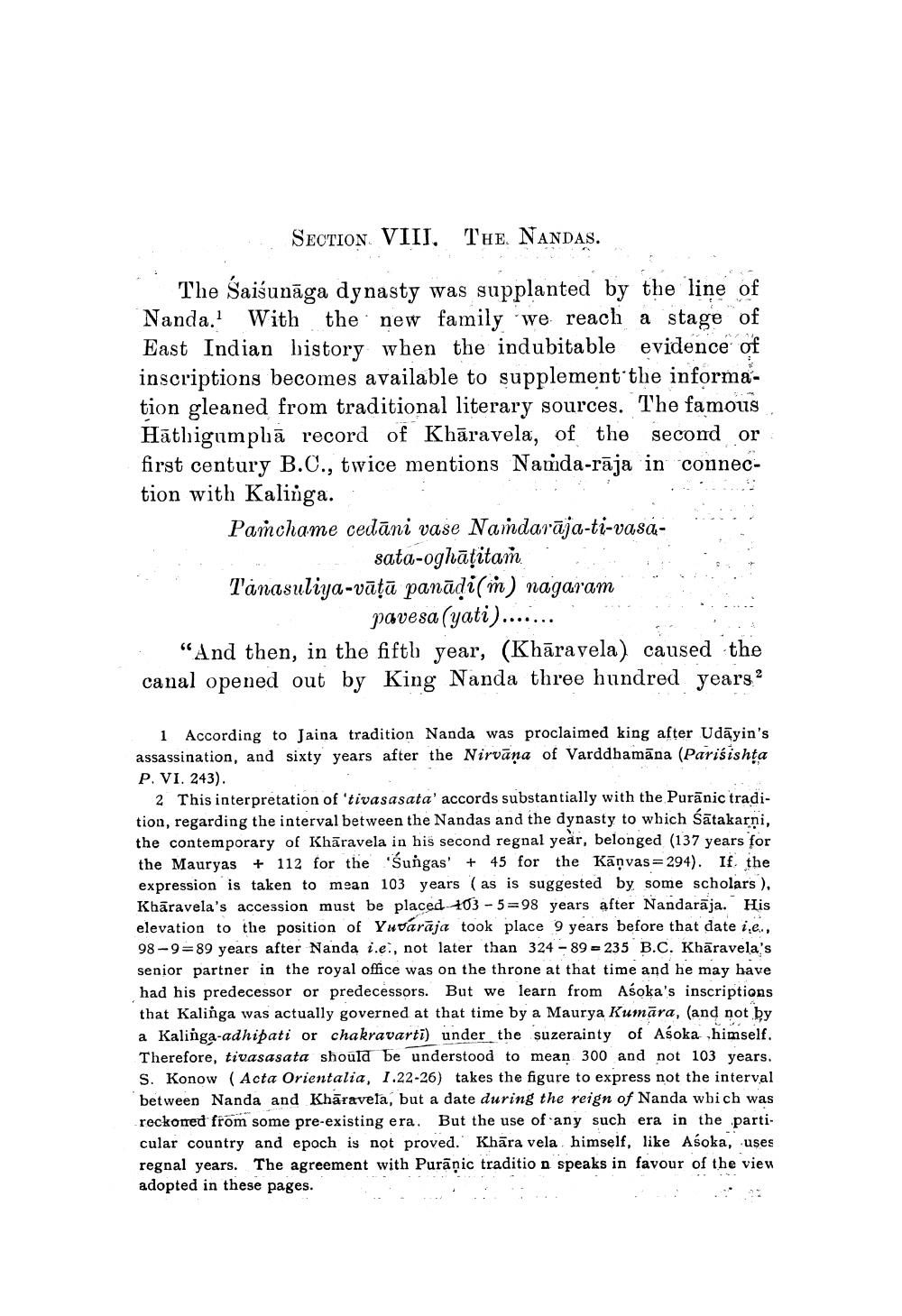________________
Section. VIII. THE. NANDAS.
The Saišunāga dynasty was supplanted by the line of Nanda. With the new family we reach a stage of East Indian history when the indubitable evidence of inscriptions becomes available to supplement the information gleaned from traditional literary sources. The famous Hāthigumplā record of Khāravela, of the second or first century B.C., twice mentions Namda-rāja in connection with Kalinga. Panchame cedāni vase Naidarāja-ti-vasa
sata-oghāțitañ Tänasuliya-vātā panādi(m) nagaram
pavesa (yati)....... "And then, in the fifth year, (Khāravela) caused the canal opened out by King Nanda three hundred years ?
1 According to Jaina tradition Nanda was proclaimed king after Udāyin's assassination, and sixty years after the Nirvana of Varddhamāna (Parisishta P. VI. 243).
2 This interpretation of 'tivasasata' accords substantially with the Purānic tradition, regarding the interval between the Nandas and the dynasty to which śātakarni, the contemporary of Khāravela in his second regnal year, belonged (137 years for the Mauryas + 112 for the Sungas' + 45 for the Kāņvas=294). If the expression is taken to mean 103 years ( as is suggested by some scholars ), Khāravela's accession must be placed 03 - 5=98 years after Nandarāja. His elevation to the position of Yuvarāja took place 9 years before that date i.e., 98-9=89 years after Nanda i.e., not later than 324 - 89 -235 B.C. Khāravela's senior partner in the royal office was on the throne at that time and he may have had his predecessor or predecessors. But we learn from Aśoka's inscriptions that Kalinga was actually governed at that time by a Maurya Kumāra, (and not by a Kalinga-adhipati or chakravarti) under the suzerainty of Asoka himself. Therefore, tivasasata should be understood to mean 300 and not 103 years. S. Konow (Acta Orientalia, 1.22-26) takes the figure to express not the interval between Nanda and Khāravela, but a date during the reign of Nanda which was reckoned from some pre-existing era. But the use of any such era in the particular country and epoch is not proved." Khāra vela himself, like Asoka, uses regnal years. The agreement with Purāņic traditio n speaks in favour of the view adopted in these pages.




